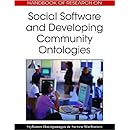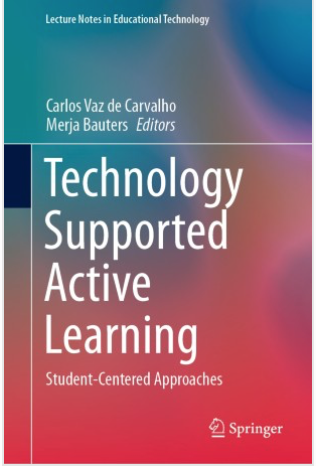
Binding affordances and GIS in hybrid places
January 23, 2009There is an interesting paper that provides some ideas how to use affordances together with geographical coordinates. This would enable the practical exploration of geolocative spaces.
However, this framework is yet limited in describing hybrid places – the various virtual artifacts and meanings and action cules that are simultaneously mapped geolocatively must be part of the place description with affordances.
The affordances are individually or culturally defined. This duality of bottom up definition and top-down use of such affordance-rich coordinates should be part of the technical platforms of mapping and exploring hybrid places.
An Affordance-Based Model of Place in GIS
Troy Jordan, Martin Raubal*, Bryce Gartrell, and Max J. EgenhoferThis paper presents a methodology to model places with affordances.
Modeling places with affordances integrates cognitive and engineering aspects, therefore leading to a knowledge-representation that comes closer to the user.
The integration of affordance-based models of places into future GIS will lead to a better communication between users and systems.We advocate the use of affordances—those things which an object, an assemblage of objects, or an environment enables one to do—for modeling place within GIS.
In order to come up with a scientific concept of place it is necessary to accommodate the relatively objective view of the theoretical scientist (i.e., a decentered view) as well as the subjective view of the individual (i.e., a centered view) who directly experiences a specific place.Tuan (1977): place is space infused with human meaning.
Experiences of places involve perception, cognition, and affection. Therefore, a place cannot simply be described as the location of one object relative to others. The concept of place has to integrate both its location and its meaning in the context of human action.The geographical concept of place refers to the areal context of events, objects, and actions, and includes both natural elements and human constructions. It also incorporates the notion of change through time.
Places are a human invention, engendered by naming, applying typologies (eg. suburb, ghetto), picking out symbols (eg Pyramids-Egipt), telling stories, and doing things.
Mapping space by GIS, though useful, does not always match the way people think about their world.
Integrating a model of how people conceptualize and perceive places into GIS will enable to use GIS to make important decisions about places.We use the following interpretation of the means-end hierarchy for a place (Rasmussen and Pejtersen 1995):
Functional Purpose: purposes and values
Abstract Function: flow of mass, energy, information, people and monetary value
Generalized Function: general work activities
Physical function: specific work processes and physical processes
Physical form: Appearance, Location and configuration of Material Objects
Zaff (1995): “Affordances are measurable aspects of the environment that can only be measured in terms of the individual.
Particularly, it is important to understand the action relevant properties of the environment in terms of values intrinsic to the agent.Affordances, therefore, play a key role in an experiential view of space (Kuhn, 1996) and place, because they offer a user-centered perspective.
Affordances of physical space can be grouped into four categories reflecting different task situations (Kuhn, 1996):
affordances for an individual user (e.g., move),
a user and an individual entity (e.g., objectify),
a user and multiple entities (e.(e.g., communicate)
We suggest the following 6 aspects of Place:
Physical features: Places consist of collections of objects. Each person perceives some set of affordances for a given small-scale object or collection of objects in large-scale space.
Actions: People perform actions in places. As we have seen, actions are one of the most
important aspects that gives meaning to a place. By defining the relationships between intentions, functions, and physical features, we uncover which actions are possible, and which are constrained.Narrative: Stories are told in order to help characterize the uniqueness of a place as we define normative/acceptable behavior, by revealing the past actions of others. Establish a historical record: What a place looked like, who was there, what they did, and why theydid it.
Symbolic representations/Names: Certain places are referenced by symbols (e.g., New York City is often referenced as the “Big Apple”) having symbolic and/or mythical meanings. Users can represent complex objects with a simpler (abstract) representation.
(why not tags?)
Socioeconomic and Cultural factors: People identify themselves with places socioeconomically. Different cultures afford different behavior in places.
Typologies: People categorize places in order to understand what is new, in terms of what is already understood.
We suggest that the integration of places into GIS would lead to a better match with people’s real-world spatial interactions than do coordinate-based models and, therefore, to a more user-friendly GIS. Our approach outlines the broad categories of information that must be gathered in order to successfully answer place-based queries. The actual work of establishing a useful affordance hierarchy is formidable. Much work needs to be done to consider the perceptual aspaffordances, especially as they need to be mapped into the electronic domain of GIS.
Kuhn W. (1996). Handling Data Spatially: Spatializing User Interfaces. in: Kraak M. and Molenaar M. (Eds.), SDH’96, Advances in GIS Research II, Proceedings. 2, pp. 13B.1-13B.23, International Geographical Union, Delft.
Rasmussen J. and Pejtersen A. M. (1995). Virtual Ecology of Work. In Flack J., Hancock P., Caird J., Vicente K. (Eds.) Global Perspectives on the Ecology ofNew Jersey, Lawrence Erlbaum Associates.
Tuan Y. (1977). Space and Place. Minneapolis, University of Minnesota Press.
Zaff B. (1995). Designing with Affordances in Mind. In Flack J., Hancock P., Caird J., Vicente K. (Eds.) Global Perspectives on the Ecology of Human-Machine Systems (volume 1), pp. 121-156. Hillsdale, New Jersey, Lawrence Erlbaum Associates.









Leave a comment